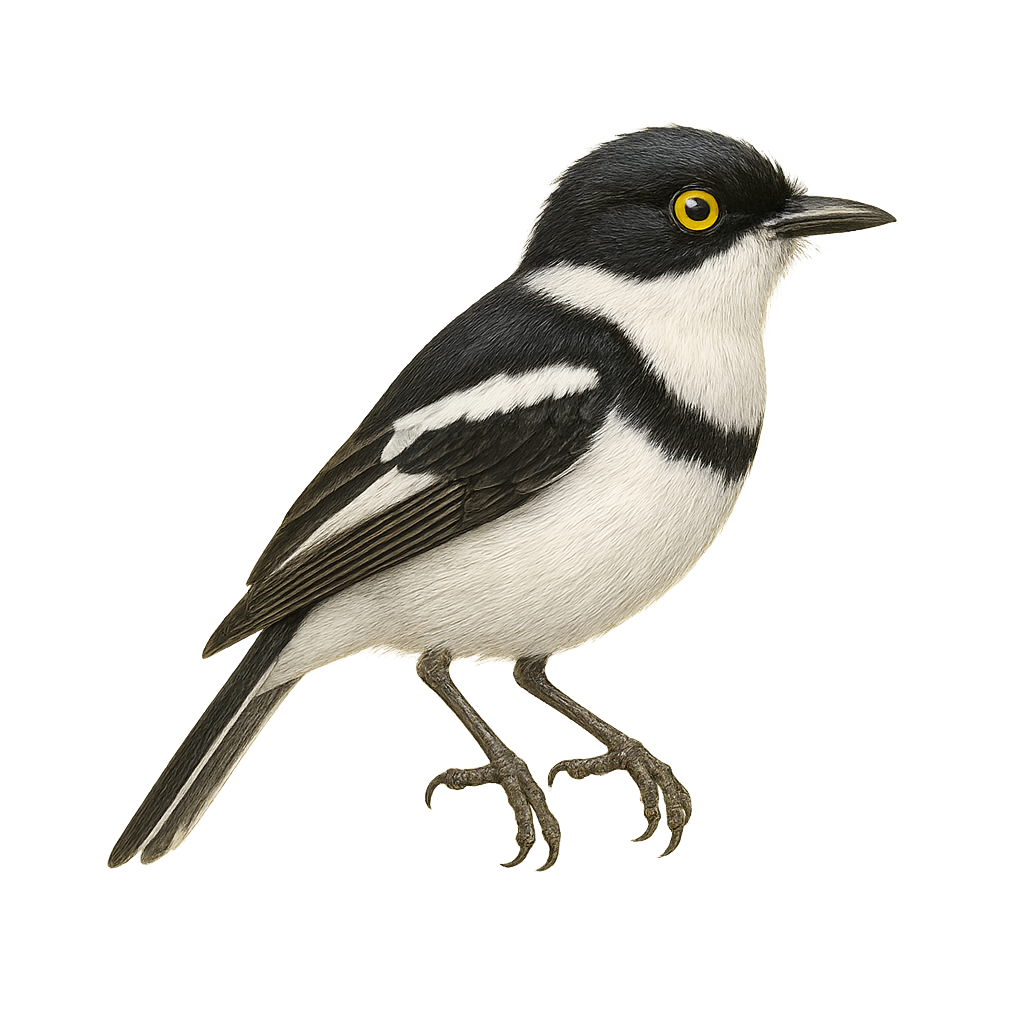Your wildlife photography guide.
Explore the pygmy batis in detail, study its behavior, prepare your shots.
Where to observe and photograph the pygmy batis in the wild
Learn where and when to spot the pygmy batis in the wild, how to identify the species based on distinctive features, and what natural environments it inhabits. The WildlifePhotographer app offers tailored photography tips that reflect the pygmy batis’s behavior, helping you capture better wildlife images. Explore the full species profile for key information including description, habitat, active periods, and approach techniques.
Pygmy Batis
Scientific name: Batis perkeo

IUCN Status: Least Concern
Family: PLATYSTEIRIDAE
Group: Birds
Sensitivity to human approach: Suspicious
Minimum approach distance: 10 m
Courtship display: March to April
Incubation: 14-16 jours
Hatchings: March to May
Habitat:
Dry savannas, thornbushes, sparse woodlands
Activity period :
Primarily active during the day, with peak activity in the morning and late afternoon.
Identification and description:
The Pygmy Batis (Batis perkeo) is a small insectivorous bird from the Platysteiridae family, primarily found in the arid and semi-arid regions of East Africa. It is characterized by its striking black and white plumage, with a distinctive black band across its chest. Males and females look similar, although females often have browner tones. This bird is known for its active and agile behavior, often seen hopping from branch to branch in search of insects. It prefers habitats such as dry savannas, thornbushes, and sparse woodlands. Although relatively understudied, the Pygmy Batis is considered a species of least concern by the IUCN due to its wide distribution and stable population.
Recommended lens:
400 mm – adjust based on distance, desired framing (portrait or habitat), and approach conditions.
Photography tips:
To photograph the Pygmy Batis, it is advisable to use a 400mm lens or longer to capture detailed images without disturbing the bird. Look for it in dry savannas or thornbushes, where it is often active during the day. Be patient and discreet, as this bird can be suspicious. Use a tripod to stabilize your camera and wait for it to briefly perch on a branch for a sharp shot. Take advantage of natural morning or afternoon light for more vibrant colors and better contrast.
The WildlifePhotographer App is coming soon!
Be the first to explore the best nature spots, track rutting seasons, log your observations, and observe more wildlife.
Already 1 432 wildlife lovers subscribed worldwide

